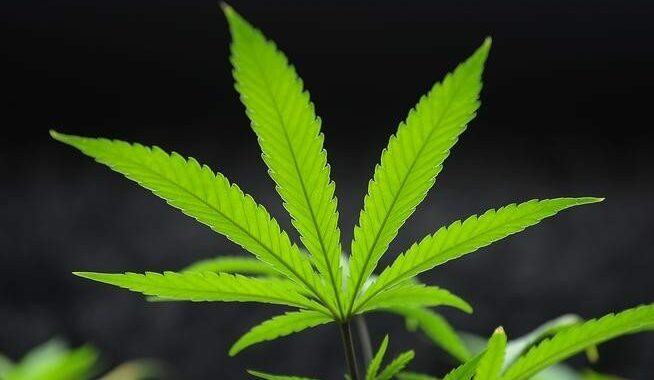Extracting Cash From Cannabis Trash
5 min read
Yet, despite irrationally exuberant investment in cannabis and industrial hemp growing, processing and sale, massive unrealized early stage funding opportunity exists for tackling environmental issues including organic and hazardous waste collection, processing and disposal.
Other than death and taxes, life’s only certainty is waste.
Yet, despite irrationally exuberant investment in cannabis and industrial hemp growing, processing and sale, a massive unrealized early stage funding opportunity exists for tackling environmental issues including organic and hazardous waste collection, processing and disposal.
Growing and Processing Cannabis and Hemp
With Corona brewer and Robert Mondavi wine producer Constellation Brands Inc. investing $3.88 billion in grower Canopy Growth, the Wall Street Journal valuing 2018′s U.S. legal marijuana sales at $10.2 billion, and marijuana stocks trading on Canadian exchanges, cannabis is officially big business.
Although 33 states have some form of a legalized marijuana program (and 10 of which have legalized both medical and adult use), marijuana remains 100% federally illegal. The Comprehensive Drug Abuse Prevention and Control Act of 1970 prohibits marijuana’s manufacture, distribution, dispensation and possession and lists it next to heroin as a Schedule I controlled substance having “a high potential for abuse.” Thus, claims may be brought against anyone in the marijuana industry’s supply chain touching the item prior to sale to the consumer; i.e., anyone planting, cultivating, harvesting, processing/extracting, testing, packaging, disposing, transporting, and dispensing marijuana.
A fast-growing, sustainable and inexpensively produced plant, “industrial hemp” is a variety of Cannabis sativa L. containing less than 0.3% plant chemical delta-9 tetrahydrocannabinol (THC), see Agricultural Act of 2014, 7 U.S. Code Section 5940. Unlike marijuana, which is cultivated to yield psychoactive THC, industrial hemp yields more than 25,000 oil and fibrous products embraced by farmers as a hedge against lower-value soy, cotton and alfalfa crops.
CBD accounted for 78% of all hemp grown in 2018. CBD is an oil based hemp-derived product offering broad health and wellness uses that achieved $641 million in domestic sales according to the Hemp Industry Journal. “Animal feed” is an example of a fibrous hemp-derived product, which, before being sold or distributed, must be deemed “generally recognized as safe” by the FDA and listed as a “recognized feed ingredient” by the American Association of Feed Control Officials.
Hemp production also skyrocketed in 2018 with 112,000 acres licensed for cultivation, 3,546 cultivation licenses issued, 78,176 total acres cultivated, and 40 universities conducting research.
Organic and hazardous waste resulting from cannabis and hemp’s cultivation and processing include stems and root balls, exhausted growing medium, failed plants, and diseased or otherwise unmarketable leaves, buds and seeds, and how the wastes are disposed of hinges on refuses’ respective THC level.
While tiny when compared with the food industry, current domestic organic cannabis and hemp waste output is approximately several million pounds. As more state programs launch and usage skyrockets, cannabis waste will greatly expand and the plant’s unique qualities coupled with strict cannabis and environmental regulations will make waste handling a complex regulatory matter.
Although each state has enacted detailed and varying cannabis production regulations (which, in turn, are further complicated by each state’s municipalities’ respective rules), all seek to maintain quality control and prevent THC from being diverted into the black market. Unlike other agricultural industries, regulations governing marijuana producers’ wastes require that each plant be assigned an identification and tracking tag, the grower maintain records of every ounce of discarded material, and a responsible party from the cultivator accompany the wastes to any external disposal sites.
Further, many states require that cannabis waste materials be stored within a secure limited access storage area under constant video surveillance (retaining images for up to 90 days), be held unaltered for three business days (permitting time for regulatory inspection), and growers maintain accurate and comprehensive waste material records accounting, reconciling and evidencing all marijuana disposal waste activity.
Managing Marijuana’s Organic and Hazardous Waste
Common options for managing cannabis organic waste include:
- Shredding and compacting: Where wastes are shredded or compacted and mixed onsite with an equal amount of organic or inorganic material rendering the waste unrecognizable, unusable and capable of being disposed of like any other noncannabis waste.
- Onsite composting: Composting residuals on site and applying compost to fields as a soil amendment, although states often limit the amount that can be applied. For example, barring any pollution or odor issues, Oregon allows up to 100 tons per year of vegetative material per installation but requires a composting permit for more than 100 tons annually.
- Bokashi process: Where wastes are shredded and mixed with an equal amount of other compostable material, water and an activator and then placed in onsite airtight drums. Following two weeks in this biologically active, anaerobic environment, the process yields a liquid suitable for fertilizer use and solids that can be applied as a soil amendment.
- Aerobic digestion: Combines finely shredded cannabis wastes with a proprietary bacteria blend in an aerobic chamber cleaning the liquid residue to a standard enabling sewer disposal or nonpotable onsite uses.
If combined with inorganic garbage, the waste mixture must be transported to a landfill site; if mixed with other organic waste, the refuse can be transported to a composting facility or anaerobic digester.
Although cannabis-including compost feedstock is like any other green waste, the process requires separate cannabis and noncannabis organic waste collection, cultivators often lack sufficient noncannabis organic material to generate requisite 50/50 mixture, and composting facilities often are not within a financially viable transportable distance from growers.
Cannabis and industrial hemp growers and processors also generate hazardous waste ranging from mercury-containing lighting, pesticides, solvents or other chemicals used in marijuana cultivation and concentrate production. Hazardous wastes must be disposed by a registered hazardous waste transporter shipping to a hazardous waste treatment, storage and disposal facility (TSDF). Before cultivator generated regulated hazardous wastes can be accepted for disposal by a TSDF, most states require both a notification to the state regulatory agency and an Environmental Protection Agency identification number.
Cannabis Waste Investment Opportunities
Composting facilities serving robust legalized marijuana programs are well positioned to dive into the market, develop expertise and dominate market share. For example, in addition to having legalized marijuana programs, California, Louisiana, Massachusetts, New York and Ohio presently have the most organic composting sites.
Similarly, regional solid waste haulers specializing in organic recycling will have an early competitive advantage in meeting growers and processors’ disposal demands and providing solutions to achieve 50/50 required composting mixture.
Leading the nation in both marijuana cultivation and “composting and anaerobic digestion infrastructure” financial assistance, California Climate Investments is a statewide program investing billions from state’s Cap-and-Trade proceeds to reduce greenhouse gas emissions, strengthen the economy and improve public health and the environment. Through expanding business’ existing capacity or establishing new facilities reducing the amount of green or food materials transported to landfills, California’s initiatives reduce greenhouse gas emissions. From 2016 to 2017, California made $12 million available for composting projects, $12 million for anaerobic digestion projects and $5 million for new or expanding existing food waste prevention projects.
Able to process a wide variety of biogenic materials, anaerobic digestion could be used to process cannabis industry waste, generate energy and diminish greenhouse gas release, and enhance large scale agriculture and urban grows. Unlike the European Union’s highly developed sector, with only 260 operational digesters the domestic anaerobic digestion market remains underdeveloped and ripe for investment.







